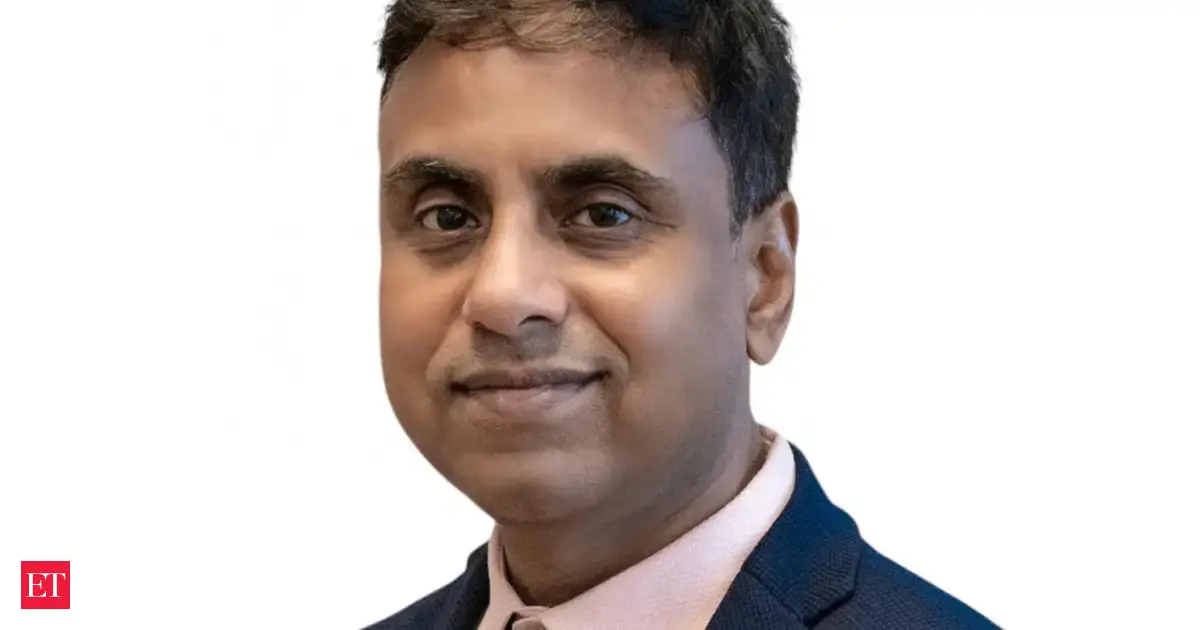By Dipanjan Roy Chaudhury
Copyright indiatimes

India’s envoy to Sweden Anurag Bhushan
India and Sweden are building scalable innovation models for sustainable growth by combining India’s scale and talent with Sweden’s strengths in research and clean technology. Together, both sides are creating solutions that can be tested locally and scaled globally, India’s envoy to Sweden Anurag Bhushan told ET’s Dipanjan Roy Chaudhury in a wide ranging interview.How are India and Sweden co-creating scalable innovation models for sustainable global growth?India and Sweden are building scalable innovation models for sustainable growth by combining India’s scale and talent with Sweden’s strengths in research and clean technology. Together, we are creating solutions that can be tested locally and scaled globally.Our governments have established strong frameworks like the Joint Innovation Partnership and the Leadership Group for Industry Transition. LeadIT2.0 was jointly launched by both Prime Ministers at COP28 in Dubai, which align policy, finance, and technology to accelerate green transformation. At the same time, the India–Sweden Innovations Accelerator has already enabled over a hundred projects in areas such as water management, waste-to-value, and energy efficiency. These initiatives show how collaboration can turn sustainability challenges into opportunities. What makes this partnership special is the active role of the private sector. Through platforms like Business Sweden and the Sweden–India Business Council, companies are taking pilot projects and turning them into market-ready solutions. This ensures that innovation is not just about ideas but about real-world impact. As we celebrate the 12th India–Sweden Innovation Day in Stockholm this year, the message is clear: by co-creating solutions and sharing best practices, India and Sweden are not only helping each other, but also offering scalable models that can support sustainable growth across the world.Live EventsAs the world’s fourth-largest and one of the fastest-growing economies, how do you see India as a global solutions provider for technology, clean energy, and inclusive development?India is showing that rapid growth and sustainability can advance together. With one of the world’s largest renewable energy programs, India is targeting 500 GW of clean power by 2030 — a scale that makes it a global leader. Through the National Hydrogen Mission, we are also building capacity in affordable green hydrogen, which has the potential to support both India’s needs and international markets.At the same time, India’s approach goes beyond technology. Initiatives like Prime Minister Modi’s Lifestyle for Environment (LiFE) campaign highlight how sustainable choices — from energy efficiency to waste reduction — can drive change at both the individual and collective level.This combination of large-scale clean energy investments, people-centric initiatives, and inclusive policies positions India as a trusted partner in shaping solutions for climate, technology, and equitable growth worldwide.“India is proving that sustainable growth at scale is possible — and in doing so, we are offering models the world can adapt for its own future.”How is Sweden’s position as a European leader in innovation, sustainability, and R&D contributing to stronger global supply chains, particularly through its collaboration with India?Sweden’s strength in innovation, sustainability, and advanced R&D makes it a natural partner for building resilient global supply chains. Its leadership in areas such as green steel, batteries, and smart manufacturing aligns well with India’s scale, talent, and rapidly expanding industrial base. By combining Sweden’s cutting-edge research with India’s cost-effective manufacturing and skilled workforce, both countries are co-developing solutions — from green hydrogen and sustainable automotive technologies to circular economy practices. This partnership not only strengthens supply chains but also ensures they are greener, more diversified, and less dependent on high-carbon systems. Together, India and Sweden are showing how trusted partnerships can turn global challenges into opportunities for sustainable growth. “Sweden’s innovation and India’s scale are a powerful combination — creating supply chains that are not just resilient, but also sustainable and future-ready.” What will be the role of public-private partnerships in achieving net-zero targets by 2050?Public-private partnerships will be central to achieving net-zero by 2050. Governments provide the vision and enabling policies, while industry contributes scale, capital, and innovation. Under the leadership of Prime Minister Modi, India has set ambitious climate goals, including net-zero by 2070, which are already driving such collaborations in renewable energy, electric mobility, and sustainable infrastructure. These partnerships reduce risks, attract financing, and ensure that solutions are practical and scalable. Going forward, PPPs will not only accelerate India’s green transition but also serve as global models for collective climate action. What is the outlook for India–Sweden bilateral cooperation beyond COP-30 in Belém?Beyond COP-30, India and Sweden are set to scale their Industry Transition Partnership under LeadIT from pilot projects into large industrial models that can reshape production, trade, and competitiveness. The emphasis will be on replicable, technology-driven solutions in hard-to-abate sectors such as steel and cement, backed by strong policy frameworks and innovative financing. Platforms like the India–Sweden Innovation Day 2025, highlighting clean energy, AI, and green manufacturing, will further drive collaboration and open technology exchange. By leveraging tools such as LeadIT’s Roadmap Planner and Transition Trackers, both nations aim to deliver measurable progress toward net-zero by 2050—positioning themselves as global leaders in sustainable industrial transformation.How can India and Sweden jointly promote circular economy practices across industries?India and Sweden can advance circular economy practices by co-funding joint innovation programs through agencies such as DST, DBT, BIRAC, Vinnova, and Formas. These initiatives focus on priority areas like electronics, textiles, marine litter, and sustainable business models, supporting collaborative projects from research to demonstration. Recent high-level dialogues involving companies such as IKEA, Volvo, and Scania with Indian counterparts highlight how circular principles can be embedded into supply chains for waste, water, and energy systems—driving both decarbonization and innovation. Looking ahead, dedicated R&D funds, innovation hubs, and stronger EPR regulations will be key to scaling circular practices in areas such as sustainable agriculture, EV infrastructure, and water recycling. This not only helps address environmental challenges but also creates new jobs, value chains, and trade opportunities.Add as a Reliable and Trusted News Source Add Now!
(You can now subscribe to our Economic Times WhatsApp channel)
Read More News onswedenindiavolvoswedenindia business councilnational hydrogen mission
(Catch all the Business News, Breaking News, Budget 2025 Events and Latest News Updates on The Economic Times.) Subscribe to The Economic Times Prime and read the ET ePaper online….moreless
(You can now subscribe to our Economic Times WhatsApp channel)Read More News onswedenindiavolvoswedenindia business councilnational hydrogen mission(Catch all the Business News, Breaking News, Budget 2025 Events and Latest News Updates on The Economic Times.) Subscribe to The Economic Times Prime and read the ET ePaper online….moreless
Prime ExclusivesInvestment IdeasStock Report PlusePaperWealth Edition123View all Stories



